In the year that celebrates the fiftieth anniversary of the discovery of the two statues in the waters of Riace, the Campania photographer wanted to pay homage to the Riace Bronzes with an exhibition, in progress until next 23 October at the MArRCa path of images dedicated to the two heroes who came from the sea, accompanied by the photographic book “Bronzi di Riace”, fourth volume of the series “Tesori Nascosti”, published by 5 Continents Editions.
Within the volume – which will be released on August 19 with an Italian, an English and a French edition – the texts of the director of the MArRC, Carmelo Malacrino, and Riccardo Di Cesare, archaeologist and professor at the University of Foggia, will dialogue with the photographic research of the master of Santa Maria Capua Vetere. A narrative that will immerse the reader in the evocative history of the Bronzes, between scientific truths and questions that still remain open.
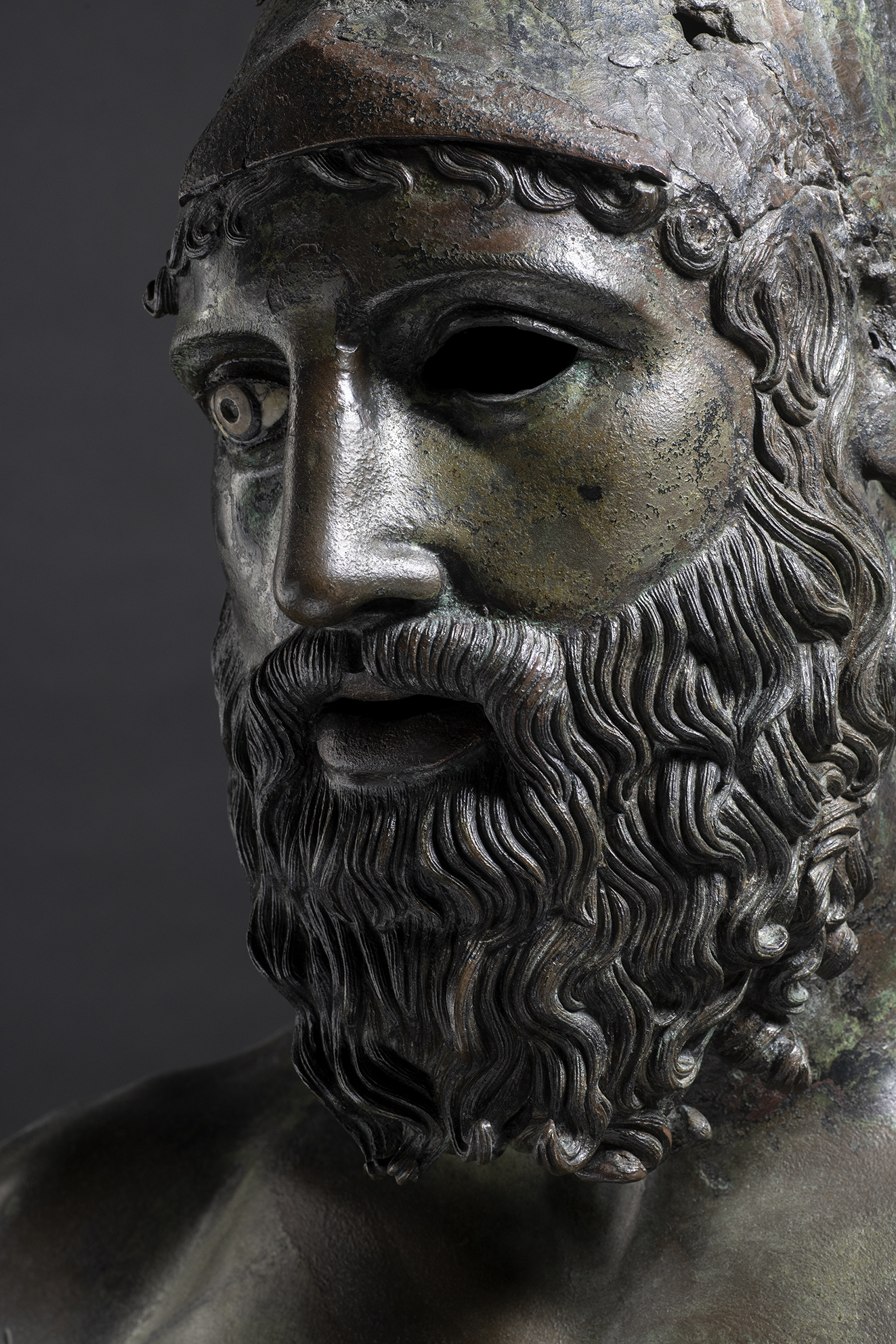
Riace Bronzes, Statue B | Photo: © Luigi Spina | Courtesy Luigi Spina
Sixteen large format photographs (90 x 134 cm) accompany the guests of the museum through the suggestive Piacenza staircase of the MArRC, proposing a visual dialogue between the two sculptures. The sequence of eight plus eight photographs, dedicated respectively to statue A and statue B, emphasizes a slow movement which, albeit incessant, creates pauses and rhythm.
We asked the photographer who has been conducting his research among the amphitheaters for over 20 years, investigating the civic sense of the sacred, the links between art and faith, the ancient cultural identities, the comparison with classical sculpture, the obsessive research on the sea, tapes of the dreamer archaeologist, to tell us about his encounter-clash with the Bronzes.
What is the purpose of your photography? What did you want to communicate through the images of the Riace Bronzes?
“My aim is to create a dialogue with the classic which has its own transversal force and which is by no means anachronistic. The purpose of my photography is to bring out the contexts. The Riace Bronzes have lost their context. Now they belong to everyone and at the same time to nobody. Then it is up to the photographer to offer contemporaneity “.
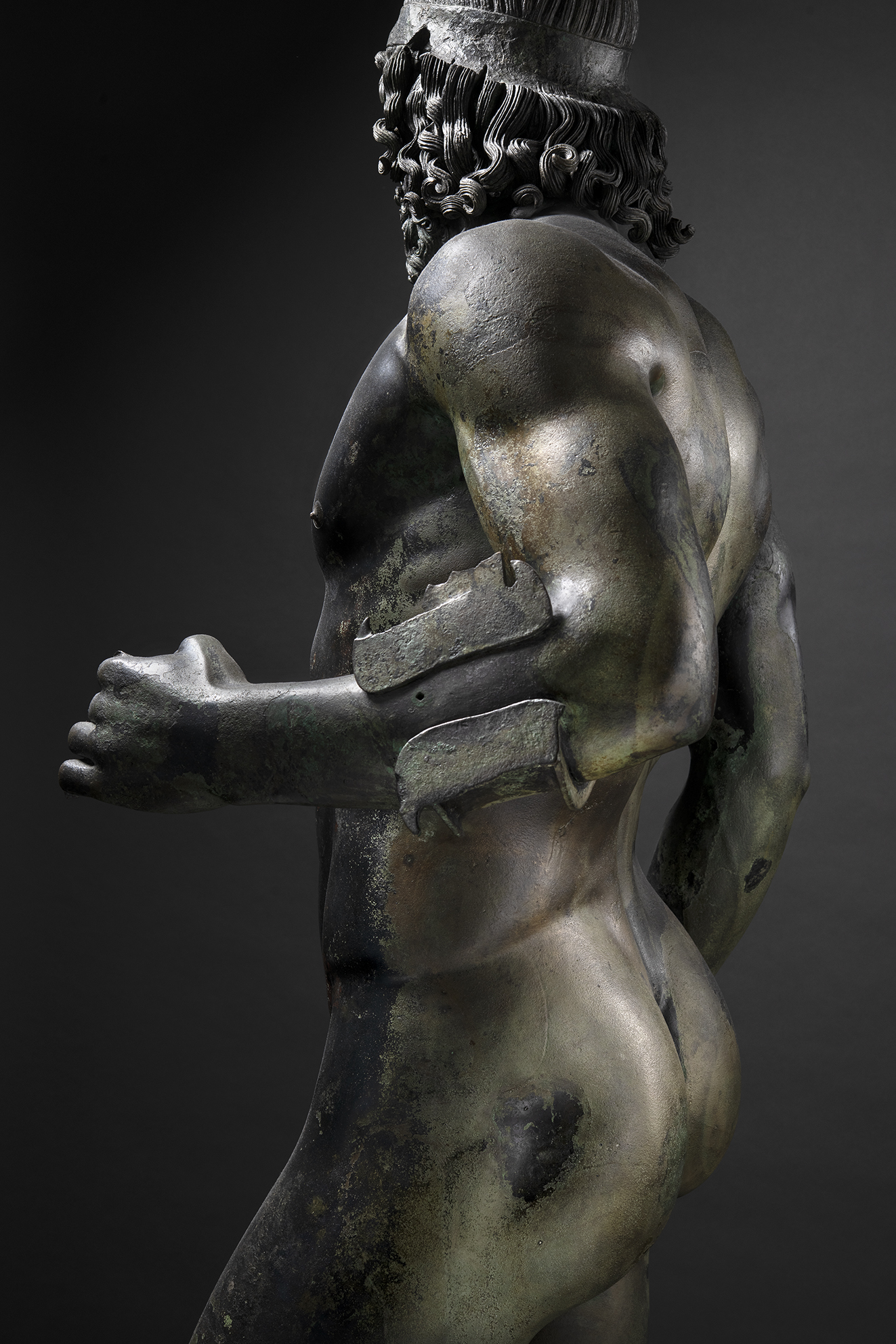
Riace Bronzes, Statue A | Photo: © Luigi Spina | Courtesy Luigi Spina
You explained that during the making of the photographs a photographic set almost “by candlelight” was set up. What do you mean?
“It is part of a way of placing the light. I work a lot and often on marble. From the point of view of the light exhibition technique, bronze becomes almost a negative compared to marble which is instead very white. It offers you the possibility to manage it through a modulation of contrasts that would not be possible in bronze. Often in bronze I essentially link myself to a single aerial light point and all the rest are just a series of reflected reflections, modulated with panels. There is practically no light, or rather the light is minimal, because otherwise the bronze would suffer ”.
You define your way of approaching sculpture as a “hand to hand”, because dimensional unity is often lost in looking at the figure live. You hand-to-hand has led many, from Canova’s plaster casts to the marbles of the Farnese Collection … How was your hand-to-hand combat with the two warriors?
“My journey begins with the Farnese Collection, continues with Canova and now here I am, at the Museum of Reggio Calabria. The one with the bronze was a very different melee. In the marbles of the Farnese Collection, but also in Canova’s plaster casts, the material changes. And it changes even more in the case of bronze. It is always a very adaptive process. I do not ask myself the question of how I will illuminate the works. This occurs very often when you are in front of masterpieces. The essential problem for me is to give them back a human dimension ”.
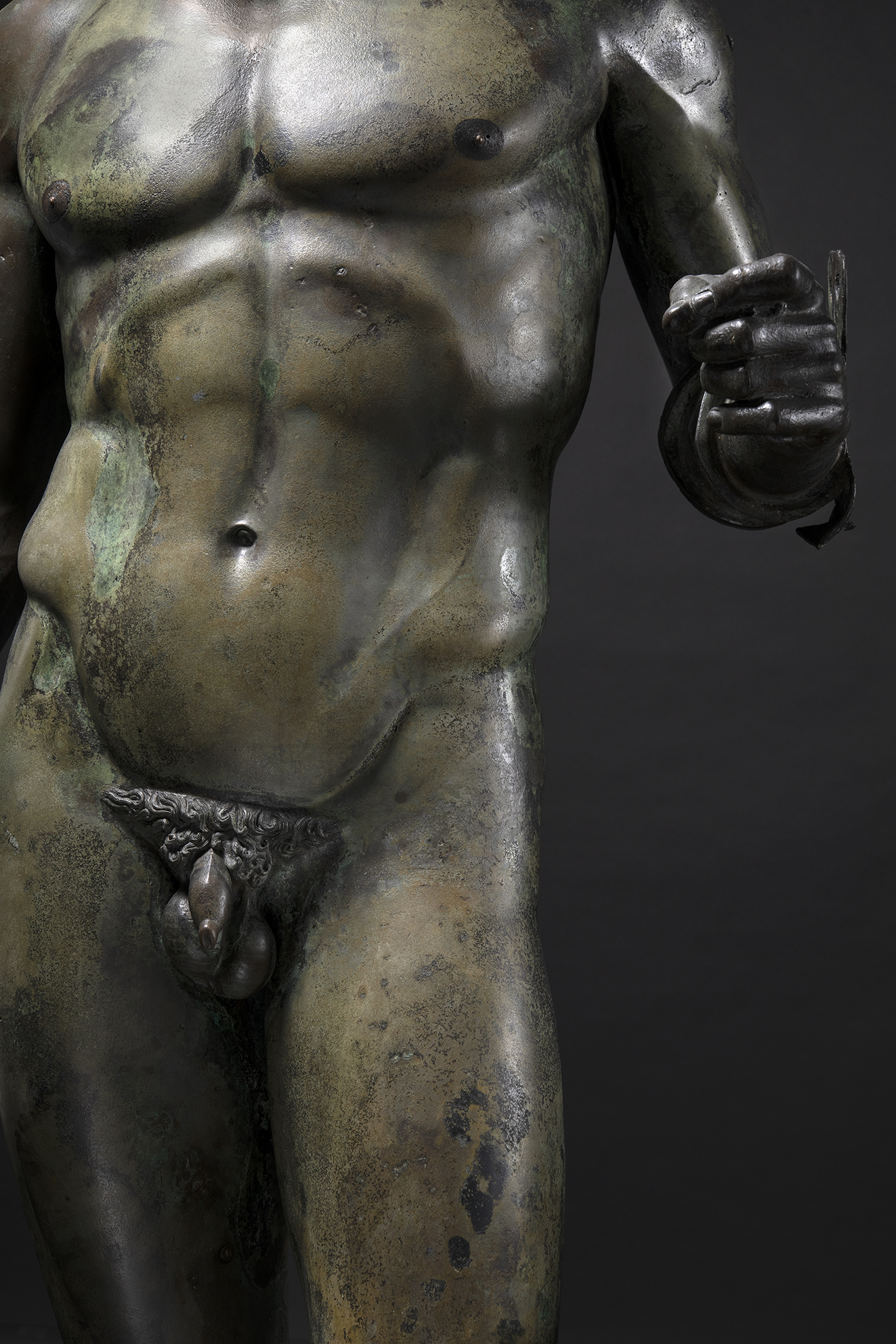
Riace Bronzes, Statue B | Photo: © Luigi Spina | Courtesy Luigi Spina
How do you manage to restore a human dimension to these ancient masterpieces?
“It happens through the modulation of light and through the cuts, sometimes really exasperated. Sometimes I cut heads, for example. Whoever observes these photographs does not even recognize which Bronze A and which Bronze B is. I do not do this for lack of respect for the masterpiece. I do it to make it as close to human needs as possible, to allow the public to confront these statues, forgetting for a moment that they are actually masterpieces. There is a whole culture in which the Bronzes were born that is a social culture, of faith, which is so distant from us that perhaps we cannot even understand it. Archaeologists manage to give context to this culture, but for a creative the essential problem remains only one: how well I can see these masterpieces in my time. I must not see these two statues as something distant. This is the initial purpose of my investigation. Then everything comes by itself and everything comes together, starting with the light. The important thing is that the social and cultural action that I want to express is clear ”.
What does it mean to be an “antiquity” photographer? Where did your passion for this type of photography come from?
“It is a passion that is formed over time, there is so much to have seen and absorbed without photographing. He doesn’t always photograph himself. Most often these great masterpieces are photographed in a distant way. Just look at the many photographs that are taken with the smartphone. Perhaps there is not even the intention to mediate them through a sensitivity. I could have written about the Bronzes and not photographed them. Instead I used photography and not writing to bring out aspects that otherwise would not have come out ”.
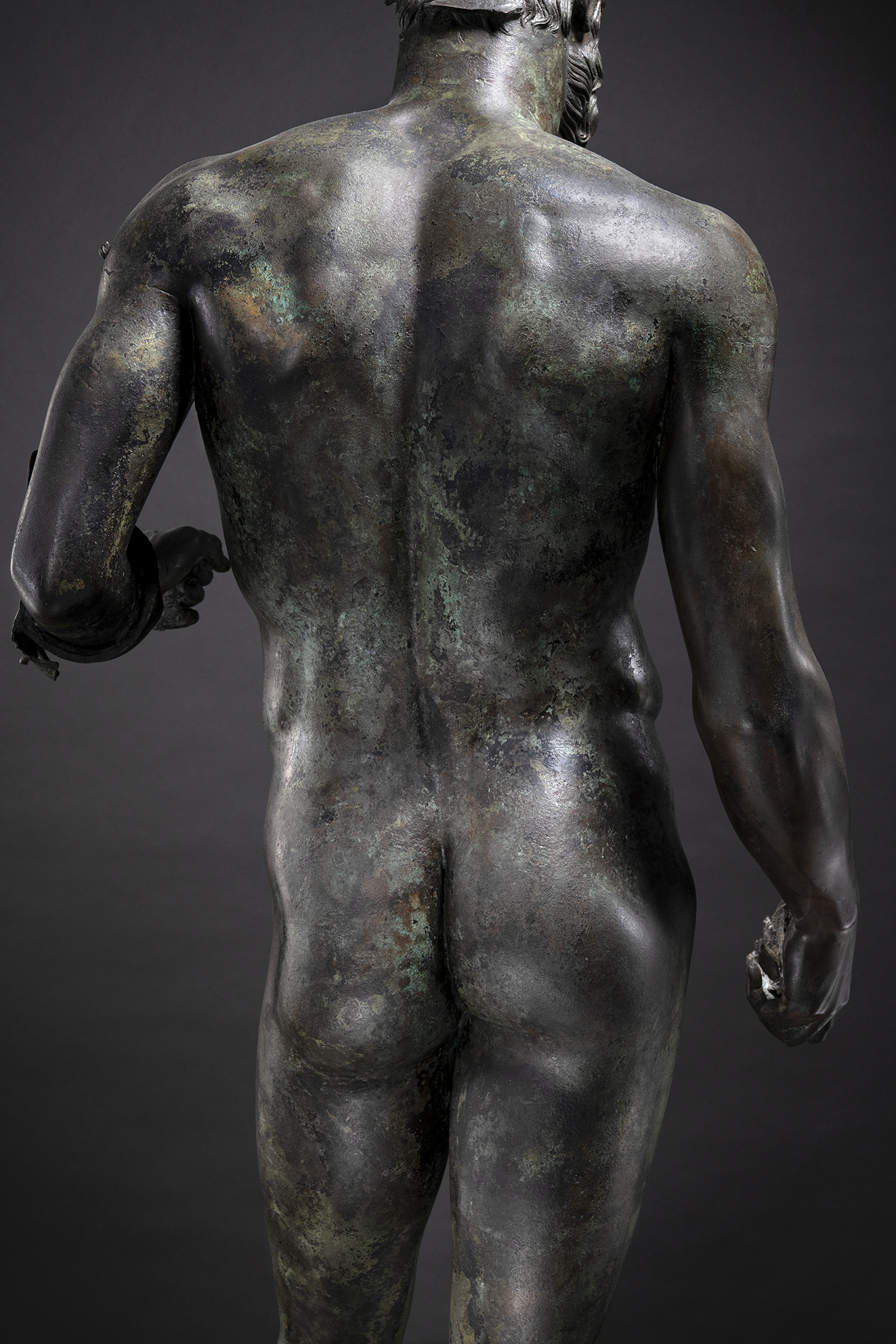
Riace Bronzes, Statue B | Photo: © Luigi Spina | Courtesy Luigi Spina
What identity did you capture in photographing Bronzi?
“There is a very strong southern identity that I feel a part of. I don’t distinguish between Naples and Palermo. But I read the whole south as a large area in which I claim my role. So if I am able to bring out aspects that are not only those objectively visible, but concern aspects of our culture, I will most likely reach the result of impact on the soul “.
In the end what is the purpose of all this?
“Also allow the new generations to be aware of their own existence. We cannot just say that the Bronzes are the great beauty. Great beauty is an ephemeral value. These statues must return to a cultural dynamism ”.
So what is the role of the artist?
“The artist takes responsibility. When the archaeologist sees such sharp cuts, like the ones I made through the photographs, he is frightened. Archaeologists think that there is a scientific aspect for which Bronze must be almost untouchable. . In this case, in the communication of an extremely dynamic director like that of the MArRC, the scientific aspect coexists with the creative one. In this way an archaeological museum, which the visitor perceives as a treasure chest of archeology, also becomes a container of art. ‘art coexists with the archaeological part ”.
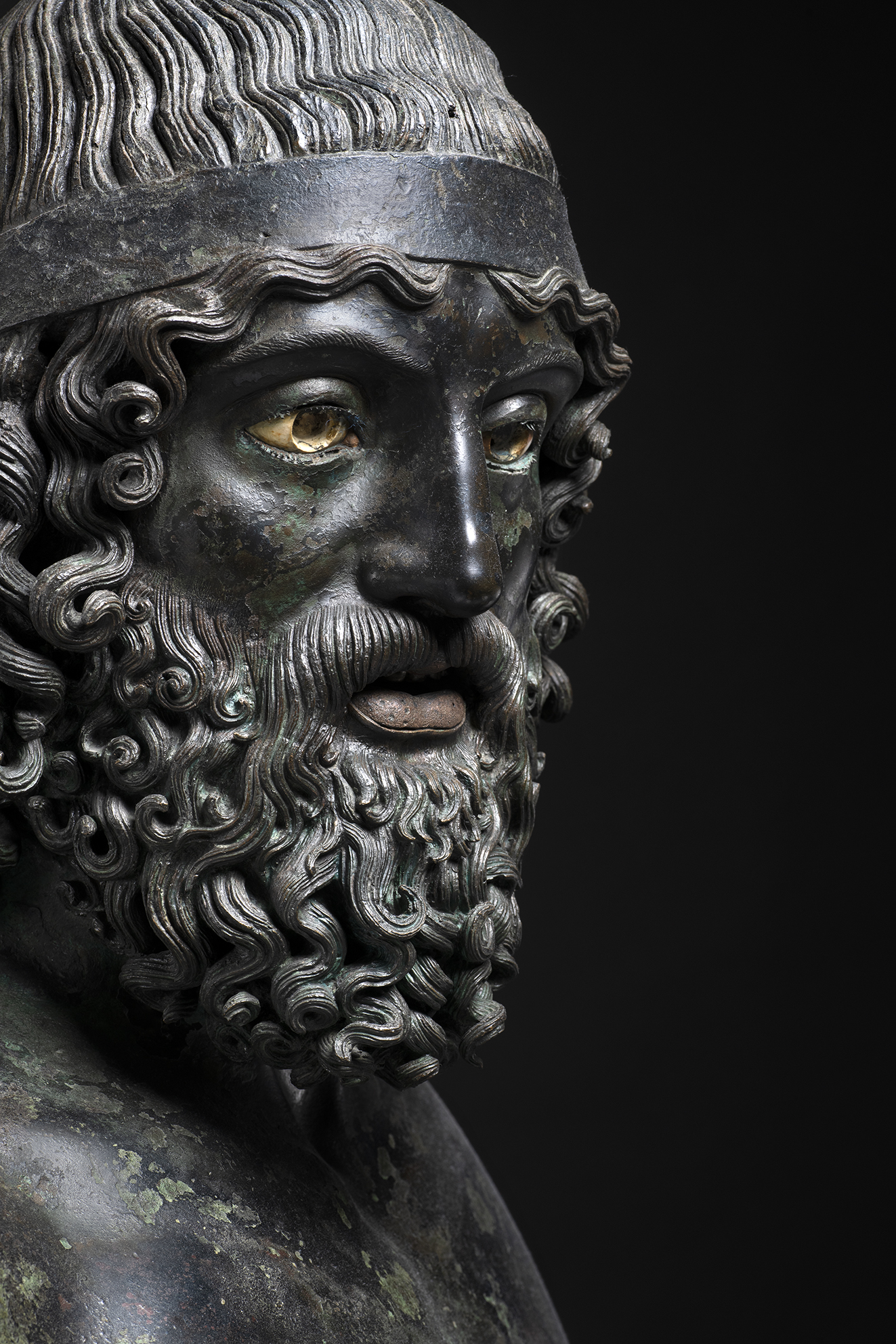
Riace Bronzes, Statue A | Photo: © Luigi Spina | Courtesy Luigi Spina
Do you remember the first work you photographed?
“The Aphrodite of Capua. I also remember the inventory number, 7017. It was my direct confrontation with my land. I am from Santa Maria Capua Vetere and Aphrodite was my first element. From there it took over 25 years to understand how important the belonging and identity of my land was for me ”.
![]() Read also:
Read also:
• Bronzi di Riace 50: a year of events to celebrate the two warriors who came from the sea

